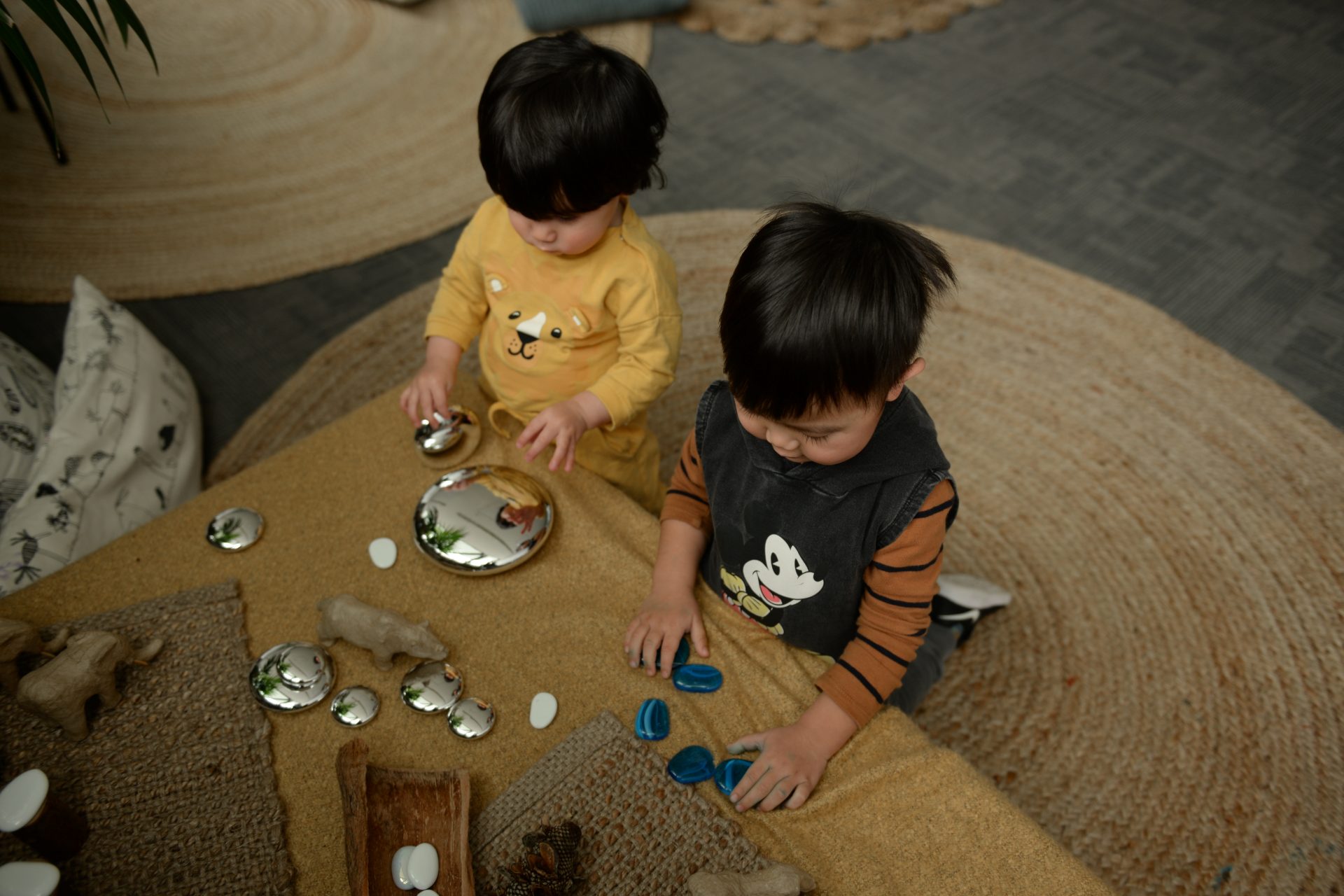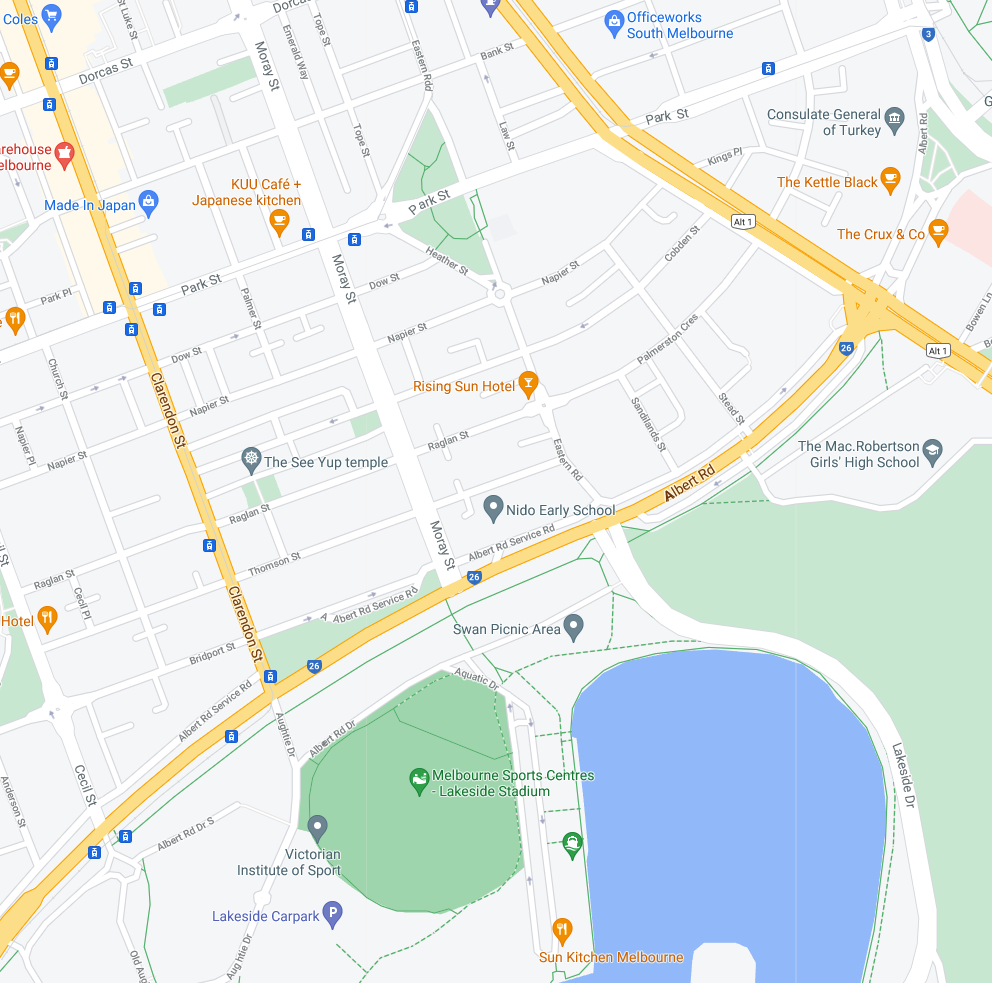
Sight, sound, touch, smell and taste – the five senses through which we experience our world. During the crucial early years of life, the areas of the brain that are responsible for each are constantly making new neural connections. Therefore, an environment that encourages the use of all of them is vital – and it’s something that’s an integral element of Reggio Emilia settings.
While we can look at each sense individually, it’s important to remember that the whole system is dynamic. Each interacts with the others – for example, seeing the redness of a strawberry, feeling its rough texture, smelling the aroma and tasting its sweetness.
Sight: a window on the world.
Babies are born with limited eyesight, seeing only the blur of shapes with no ability to see at distance. This develops over the first months and years. Between the age of 3-5, their vision will be comparable to an adult, but the eye-brain pathway continues to enhance until around eight years old (on average).
Once this is understood, the importance of providing visual stimuli becomes clear. In Reggio Emilia settings, this is encouraged through a variety of methods, such as:
- The use of light, airy spaces that accentuate colour, shapes and the contrast between light and shade.
- Using bright colours that catch the eye and invite a child to reach out, touch and explore objects further.
- Including many geometric shapes and patterns. These might be incorporated into the décor – rugs, cushions, furniture, pictures, toys… Anything goes.
- Encouraging creative, visually stimulating activities. Child-friendly paints and crayons, using glitter, sticking shapes – all kinds of age-appropriate arts and crafts that invite exploration, creativity, imagination and discovery.
- Furthering hand-eye coordination. This important skill combines both eyesight and touch – and is learned in so many ways. From using a paintbrush to the dexterity needed to sort pebbles into groups of similar shapes, this is an example of crossover development where sensory activities stimulate multi-sense development.
Touch: Interpretation through feeling
In the earliest weeks and months, touch is one of the foremost ways a baby interacts with the world. In the early learning environment, it’s vital that this is continued, as tactile experiences not only promote discovery, but are one of the building blocks of critical thinking and problem-solving.
Reggio Emilia classrooms are filled with texture. Children are free to touch and explore, creating their own path of discovery. Examples might include creative activities with dry autumn leaves – who doesn’t love their crunchy crispness? A sand pit, water bobbing, mud pies (yes, getting messy is an important element of sensory play), finger painting and more.
Another staple is a sensory basket, filled with a wide variety of textured objects. Such play not only helps develop touch but also introduces vocabulary as children learn to vocalise what they feel.
Hearing: the first sense to develop
The area of the brain that interprets sound is developing way before a baby enters the world. At around 18 weeks they can hear noises within the body – and at around 27 weeks this extends to exterior sound, such as voices and music. However, distinguishing between sounds and understanding them is a skill that’s learned during the first weeks, months and years after birth.
This is encouraged through:
- Repetition: Using rhythm exercises, songs, music, instruments etc.
- Storytelling: Reading age-appropriate tales out loud – and retelling the ones that pique the imagination. Every adult has a memory of a favourite childhood story that they could never get enough of hearing.
- Noise-focused activities: Examples might include listening to the different sounds water makes as it splashes, pours or drips, or maybe the changing noises a rattle makes when you shake it slowly or fast.
Smell: Invoking the conscious and subconscious mind with aroma
Smell is one of the most fascinating senses because it stimulates both the conscious and subconscious mind. We’ve all experienced that sudden rush of emotion or a long-forgotten memory when a certain smell hits our nostrils – it’s a well-understood reaction and one used by marketers to drive consumer behaviour in many settings.
Developing the sense of smell is crucial during the early years as it has a strong influence on memory, emotion and learning. It can be encouraged in so many ways, such as smelling flowers, sniffing food before tasting it and exploring the aroma of herbs and other cooking ingredients. Once again, encouraging the development of smell is cross-linked to other senses, such as the smell and feel of fresh grass during outdoor play or noting the colour of a banana and the sweetness of both its smell and taste.
Taste: Sensory development in combination with healthy nutrition
The foundations of healthy nutrition are laid during childhood. In the Reggio Emilia setting, children are encouraged to explore different foodstuffs, learning about different tastes and textures. Again, this crossover between taste and touch (or mouthfeel) is highlighted and can be encouraged in so many ways.
In the early learning environment, this is promoted through making mealtimes fun. Children are encouraged to take the lead and assist with food preparation and presentation. Finger bowls and tasting plates are common. Experimenting with different foods fosters a great attitude towards food. Multi-cultural classrooms are fabulous for this, with activities centred around tasting traditional elements commonly enjoyed on tables around the world being a great way to experience different dishes and the taste opportunities they bring.
At Evoke Early Learning, we adopt the Reggio Emilia approach throughout our nursery, toddler and kindergarten programmes. Sensory learning is at the forefront of our learning spaces and a primary focus in our childcare philosophy.
Discover more about enrolling your child at Evoke Early Learning and book a tour to see us in action.

Tracey is a highly qualified educator and administrator and brings a strong combination of academic achievement, extensive work experience in the education and business sectors as well as drive and passion to her role as General Manager of Operations at Evoke Early Learning.
Tracey has a Master of Education and an Advanced Diploma of Business and holds VIT Dual Registration to teach in Early Childhood and Primary School settings. She’s also a VIT Trained Mentor Teacher and has worked in ECEC settings as a Director, Educational Leader and as a Victorian Senior Area manager. Her recognition as a state finalist in the recent Director of the Year Awards is testament to her achievements in the early education sector.
Her extensive work experience also included a stint as Head of Curriculum at the Royal Children’s Hospital Education Institute and positions as head of ICT at a number of large primary and secondary schools. Tracey is also experienced in not-for-profit sessional kindergarten settings and long daycare environments, so she has a deep understanding of what’s required to support the needs and expectations of young children, educators, parents and caregivers.
Tracey is responsible for operational management at Evoke Early Learning’s Clayton centre in Oakleigh East and their Albert Park centre in South Melbourne and is deeply committed to leading and driving effective and sustainable service delivery throughout the company.
Tracey is passionate about making a meaningful difference to young children, their parents and the wider community and under her expert guidance, Evoke Early Learning is continuing to raise the bar in quality early education and childcare.


